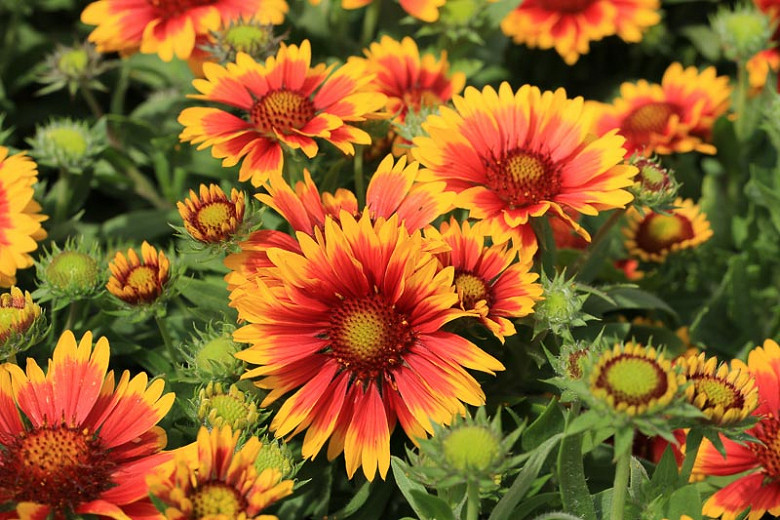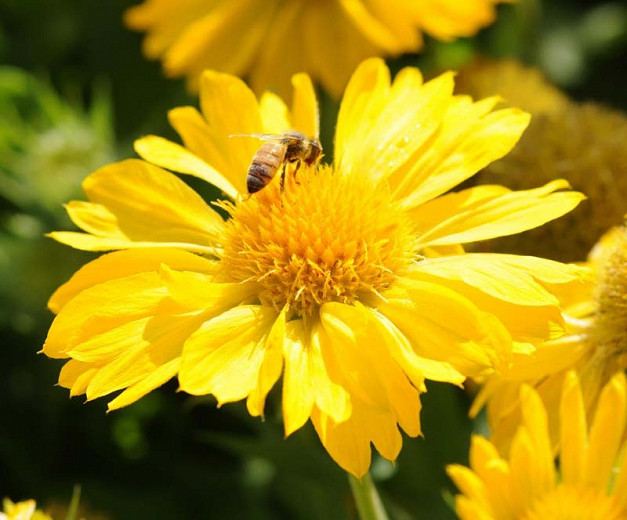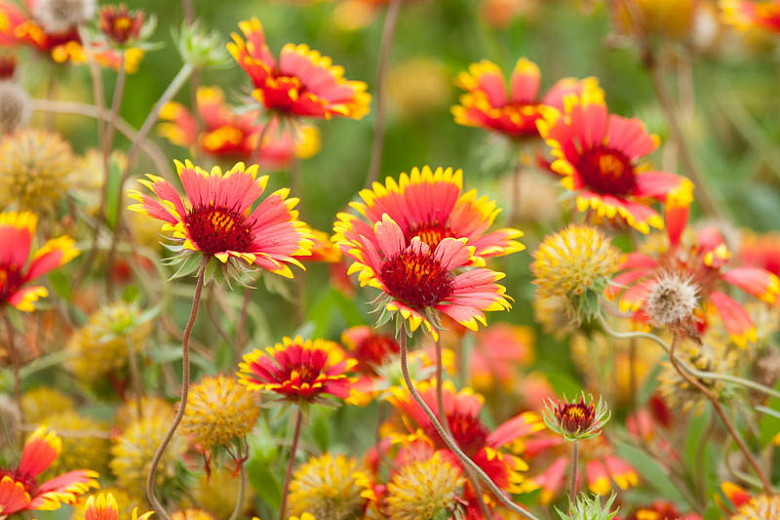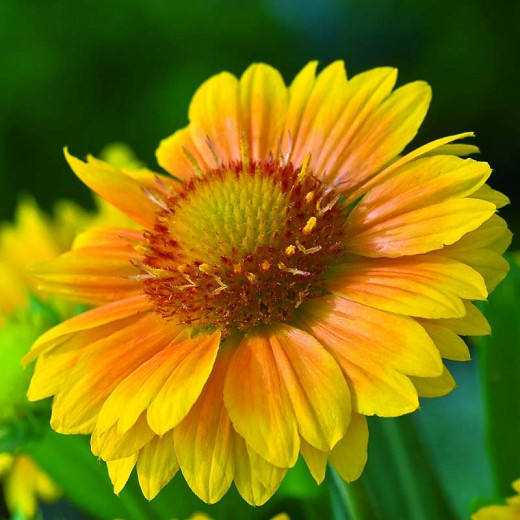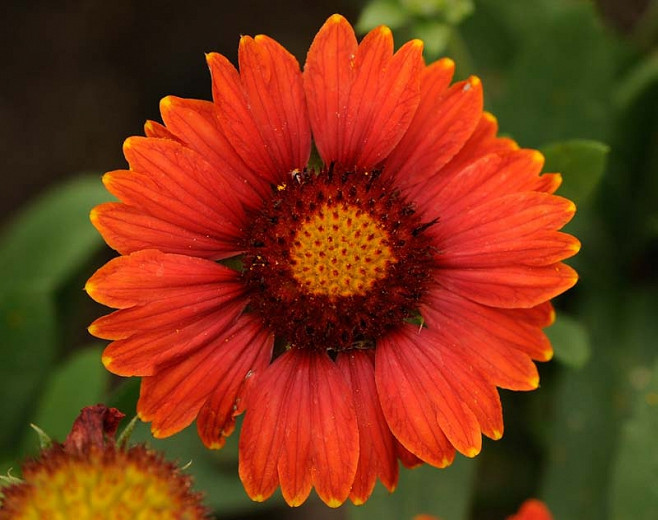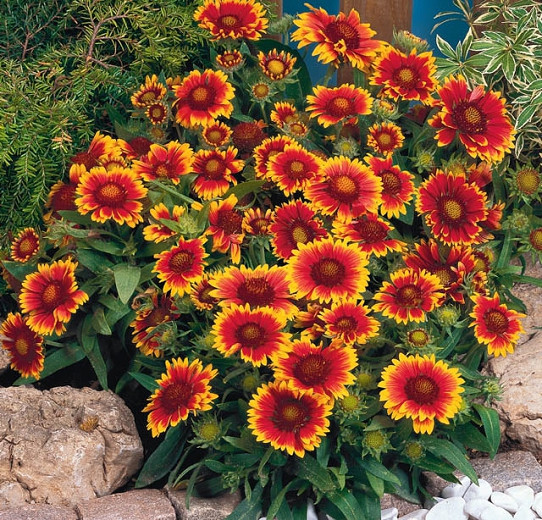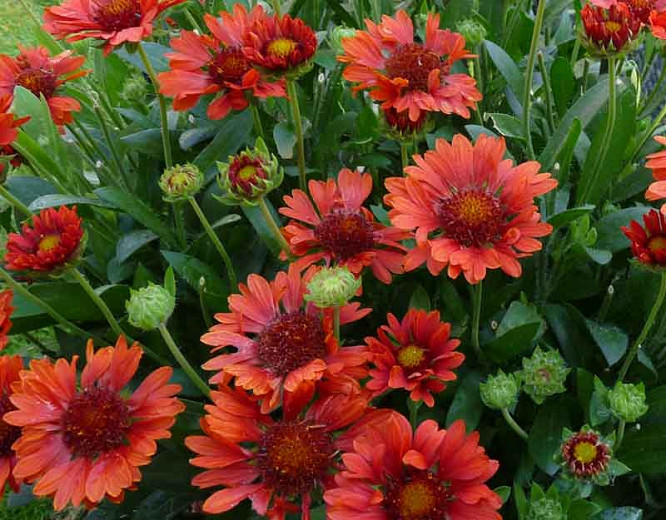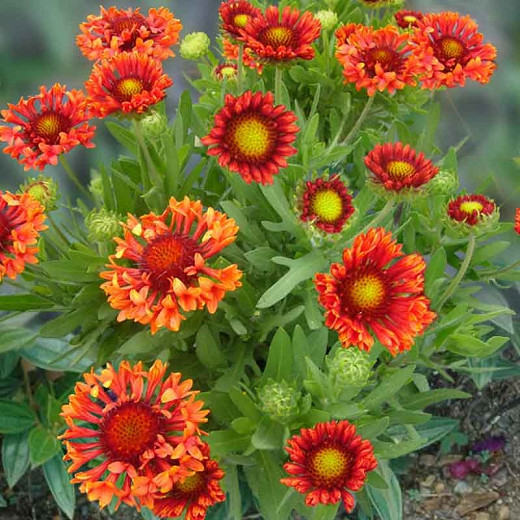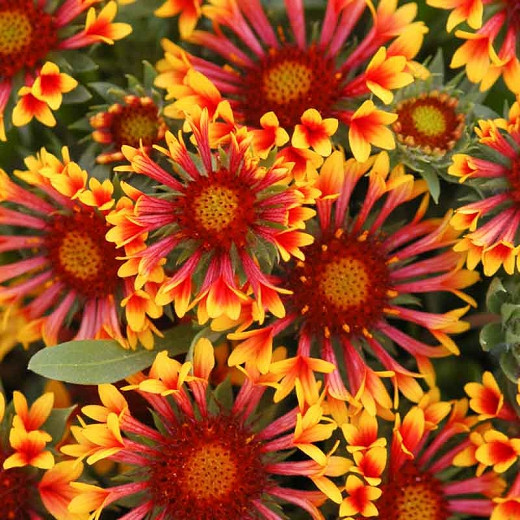Gaillardia aristata (Great Blanket Flower)
A long-lived western native, Gaillardia aristata (Great Blanket Flower) is an erect perennial wildflower boasting daisy-like flower heads, 3 in. across (7 cm), with a red center disk surrounded by red rays with yellow tips. Blooming from late spring to fall, the flowers provide continuous color in the garden or containers. They are borne atop hairy stems with clasping, dandelion-like leaves. The rough-hairy, lance-shaped, alternate leaves, 6 in. long (15 cm), are entire to coarsely-toothed, or rarely pinnately divided. Rich in nectar, the flowers attract many pollinators, including bees and butterflies. Birds love the seed heads. An important wildflower of the prairies and meadows, Gaillardia aristata is easy to grow, heat and drought tolerant and requires little care. Gaillardia aristata looks best in naturalistic plantings and can be used as an ornamental specimen plant or a mass display in low xeriscape and water-wise gardens.
- Grows up to 24-30 in. tall (60-75 cm) and 24 in. wide (60 cm). May reseed in optimum growing conditions.
- Thrives in full sun, in average, dry to medium, well-drained soils. Prefers moist, organically rich, sharply drained soils, but tolerates dry soils and drought. Requires supplemental moisture only during extended hot, dry conditions.
- A wonderful addition to the garden, this enthusiastic bloomer is well suited to beds and borders, containers, rock gardens, butterfly gardens, or prairies and meadows.
- Susceptible to root rot in poorly drained soils. Keep an eye out for powdery mildew, aster yellows, and fungal leaf spot diseases.
- If flowering declines in the heat of summer, cut back to promote a fall bloom.
- Propagated by seed, root division or separation of offsets. Plant untreated seed in spring or fall. Make root divisions in early spring. Plants raised from seed will not flower the first year.
- Native from North Dakota to Colorado west to California and British Columbia.
Requirements
| Hardiness | 3 – 8 |
|---|---|
| Heat Zones | 1 – 8 |
| Climate Zones | 1, 1A, 1B, 2, 2A, 2B, 3, 3A, 3B, 4, 5, 6, 7, 8, 9, 10, 11, 12, 13, 14, 15, 16, 17, 18, 19, 20, 21, 22, 23, 24, H1, H2 |
| Plant Type | Perennials |
| Plant Family | Gaillardia – Blanket Flowers |
| Exposure | Full Sun |
| Season of Interest | Spring (Late)Summer (Early,Mid,Late)Fall |
| Height | 2' – 3' (60cm – 90cm) |
| Spread | 1' – 2' (30cm – 60cm) |
| Spacing | 24″ (60cm) |
| Water Needs | Low, Average |
| Maintenance | Low |
| Soil Type | Chalk, Loam, Sand |
| Soil pH | Acid, Alkaline, Neutral |
| Soil Drainage | Well-Drained |
| Characteristics | Showy |
| Native Plants | United States, California, Midwest, Illinois, Michigan, Minnesota, North Dakota, South Dakota, Wisconsin, Northeast, Connecticut, Massachusetts, New Hampshire, New York, Pacific Northwest, Idaho, Oregon, Washington, Rocky Mountains, Colorado, Montana, Utah, Wyoming, Southwest, Arizona, New Mexico |
| Tolerance | Drought |
| Attracts | Bees, Birds, Butterflies |
| Garden Uses | Beds and Borders, Patio and Containers |
| Garden Styles | Gravel and Rock Garden, Informal and Cottage, Prairie and Meadow |
